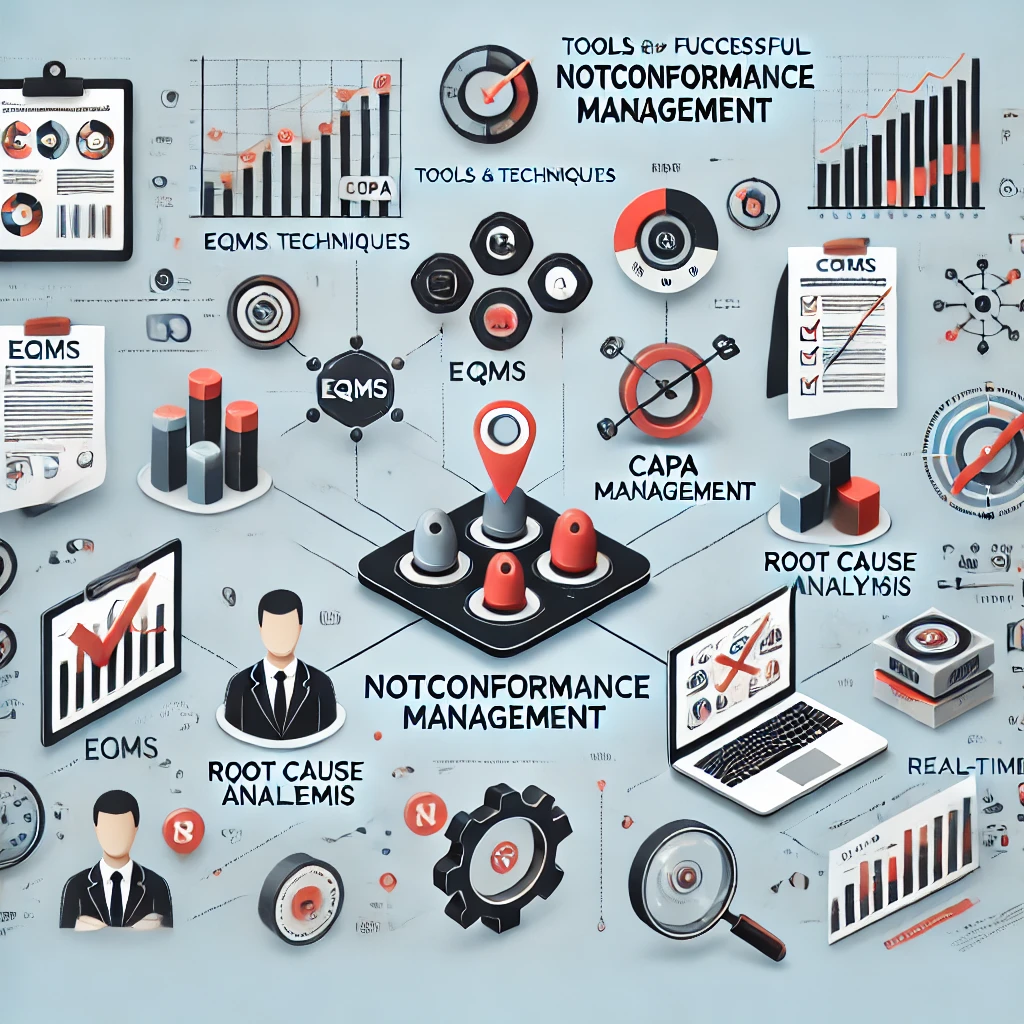Effective nonconformance management is essential for maintaining product quality and compliance with industry standards. Nonconformance refers to any deviation from specified requirements, and managing it involves identifying, documenting, and addressing these deviations. This blog will explore the tools and techniques necessary for successful nonconformance management, with a focus on nonconformance reports and their role in the process.
1. Understanding Nonconformance
1.1 Definition of Nonconformance
Nonconformance occurs when a product, process, or system does not meet specified requirements. This can include defects in materials, deviations from design specifications, or failures in processes.
1.2 Types of Nonconformance
Nonconformance can be categorized into minor and major types. Minor nonconformance may not significantly impact the product’s performance, while major nonconformance can lead to severe defects and safety concerns.
2. The Importance of Nonconformance Management
2.1 Impact on Quality and Compliance
Effective nonconformance management is crucial for maintaining high-quality standards and ensuring compliance with regulatory requirements. Unaddressed nonconformance can lead to product recalls, legal issues, and loss of customer trust.
2.2 Cost of Nonconformance
The Cost of Nonconformance includes both direct costs, such as rework and scrap, and indirect costs, such as lost revenue and damage to reputation. Implementing robust nonconformance management practices can significantly reduce these costs.
3. Non Conformance Report: A Key Tool
3.1 What is a Non Conformance Report (NCR)?
A non conformance report is a document used to record details of a nonconformance, including its nature, cause, and corrective actions taken. It serves as a formal record for tracking and managing Nonconforming products or processes.
3.2 Components of a Non Conformance Report
An effective non conformance report should include the following components:
- Description of the nonconformance
- Identification of affected products or processes
- Root cause analysis
- Corrective and preventive actions
- Verification of actions taken
4. Tools for Nonconformance Management
4.1 Quality Management Systems (QMS)
A robust Quality Management System (QMS) is essential for effective nonconformance management. A QMS provides a structured framework for identifying, documenting, and addressing nonconformance.
4.2 Electronic Nonconformance Management Systems
Electronic systems streamline the process of managing nonconformance. They provide real-time tracking, automated workflows, and easy access to historical data, enhancing efficiency and accuracy.
5. Techniques for Effective Nonconformance Management
5.1 Root Cause Analysis
Root cause analysis is a critical technique for identifying the underlying causes of nonconformance. Techniques such as the Five Whys, Fishbone Diagram, and Failure Mode and Effects Analysis (FMEA) can help uncover the root causes.
5.2 Corrective and Preventive Actions (CAPA)
Implementing corrective and preventive actions is essential for addressing nonconformance and preventing recurrence. CAPA involves identifying corrective actions to fix the immediate issue and preventive actions to eliminate the root cause.
6. Documentation and Record Keeping
6.1 Importance of Accurate Documentation
Accurate documentation is vital for effective nonconformance management. It ensures that all incidents are recorded, analyzed, and addressed systematically.
6.2 Best Practices for Record Keeping
Best practices for record keeping include maintaining detailed non conformance reports, tracking corrective actions, and regularly reviewing and updating records. Electronic systems can facilitate efficient documentation and retrieval of records.
7. Training and Awareness
7.1 Employee Training Programs
Training employees on nonconformance management processes and tools is essential for success. Comprehensive training programs should cover identifying nonconformance, using non conformance reports, and implementing corrective actions.
7.2 Promoting a Culture of Quality
Promoting a culture of quality within the organization encourages employees to proactively identify and address nonconformance. Regular communication, recognition of good practices, and leadership support are key to fostering this culture.
8. Continuous Improvement in Nonconformance Management
8.1 Importance of Continuous Improvement
Nonconformance management is an ongoing process that requires continuous improvement. Regularly reviewing and refining processes helps identify areas for improvement and implement best practices.
8.2 Implementing Continuous Improvement Programs
Programs such as Six Sigma and Lean Manufacturing can support continuous improvement in nonconformance management. These programs focus on reducing variability and eliminating defects, leading to higher quality and efficiency.
Conclusion
In 2024, the complexity of nonconformance management demands advanced solutions. ComplianceQuest Management Software offers a comprehensive suite of tools designed to streamline nonconformance management, from root cause analysis to corrective and preventive actions. By leveraging ComplianceQuest, organizations can enhance their nonconformance management processes, reduce the cost of nonconformance, and maintain high standards of quality and compliance. Investing in ComplianceQuest Management Software is essential for businesses aiming to stay competitive and achieve long-term success.
By addressing these common challenges and leveraging advanced technology, organizations can enhance their nonconformance management processes, leading to improved product quality, increased customer satisfaction, and overall business success.
